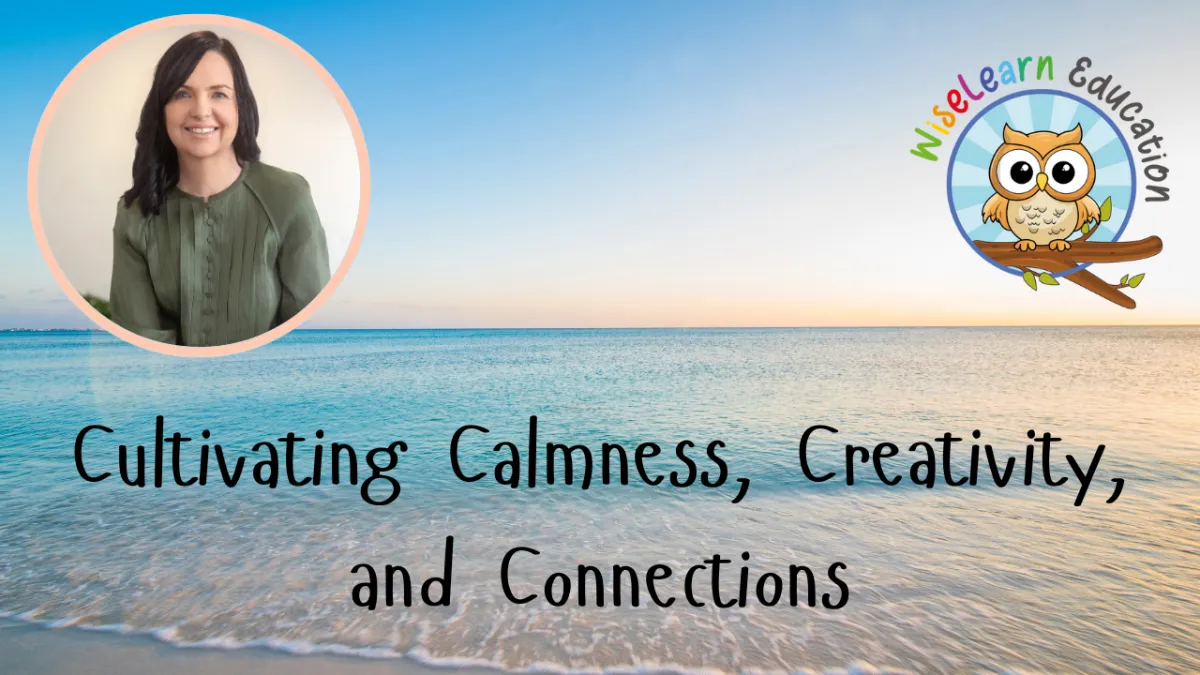
The Essential Trio for Children's Wellbeing: Cultivating Calmness, Creativity, and Connections
The Essential Trio for Children's Wellbeing: Cultivating Calmness, Creativity, and Connections
In the whirlwind pace of today's world, ensuring the wellbeing of our children is more important than ever. The trio of calmness, creativity, and connections serves as the cornerstone for their holistic growth and development. Let’s explore each of these elements and discover strategies to integrate them into children's daily lives effectively.
Calmness: Cultivating Inner Peace for Resilience
A peaceful state of mind lays the foundation for a child’s ability to handle stress and challenges. Incorporating calming practices such as mindful moments, guided imagery, and nature walks can significantly benefit their emotional regulation. For instance, practicing imaginative breathing exercises can help children visualise their breath as waves gently lapping on the shore. Encouraging moments of mindful reflection during the school day or at home helps children learn to pause, reflect, and recharge, building resilience that is essential for future adversities.
Creativity: The Core of Critical Thinking and Innovation
Creativity isn't just an artistic outlet; it's a vital component of intellectual development. Encouraging creative play and problem-solving can transform learning experiences, fostering a sense of curiosity and adaptability.
Educators can integrate creativity into their curriculum by incorporating:
Art in Writing Tasks: Allow children to illustrate their stories or design a theme park. These tasks can also include creating promotional materials, engaging their imagination and helping them see the practical application of their creativity.
Balanced Phonics with Inquiry: Implement a combination of structured phonics and inquiry-based learning. Approaches like Joy Allcock's (Code-Ed by Joy Allcock) and Jill Eggleton's (Global Ed)ucation Systems NZ) methods balance skill acquisition with engaging, exploratory learning.
Prior Knowledge Assessment: Start from what children already know, tailoring learning experiences that connect with their interests. This helps in building a meaningful context for creative expression.
Daily Inquiry and Storytelling in Mathematics: Allow children the freedom to explore and create in maths alongside skill building. While skills are essential, so is creativity and design. Mathematics should be approached as a tangible experience before transitioning to abstract concepts. This experiential approach is beneficial for any age when learning new content.
Creating an environment where questions are welcomed and imagination thrives inspires children to think outside the box. Rather than focusing solely on skill acquisition, blending creativity with structured learning encourages children to become innovative thinkers and designers of their future. In a world where information is readily accessible, fostering creative expression daily helps develop current and future thinkers who are equipped to tackle complex problems with innovative solutions. Remember, when children are engaged creatively, their motivation to learn enhances significantly.
Connections: Building Relationships for Emotional Growth
Strong connections are the backbone of emotional intelligence and empathy. For children who seek attention, these behaviours often signify a deeper need for connection. A simple yet effective strategy involves dedicating one to two minutes daily, focusing on positive interactions with such children. Whether you are an educator or a parent, being present and actively listening can significantly improve a child’s sense of belonging and confidence.
Encourage interactive play and shared experiences to teach collaboration and communication, essential skills for building meaningful relationships. When children feel connected to their peers and adults, their confidence escalates, and with it, their ability to relate to others. These connections nurture a sense of community and support that is vital for both emotional and social development.
Creating a Balanced Framework
By weaving calmness, creativity, and connections into the fabric of daily life, we provide children with a balanced foundation for lifelong wellbeing. These elements not only enhance academic performance but also foster a joyful and fulfilling life. As parents, educators, and mentors, your role is pivotal in nurturing these crucial aspects. Let's champion an educational environment that prioritises emotional and intellectual growth, ensuring our children are ready to embrace the future with open minds and hearts.